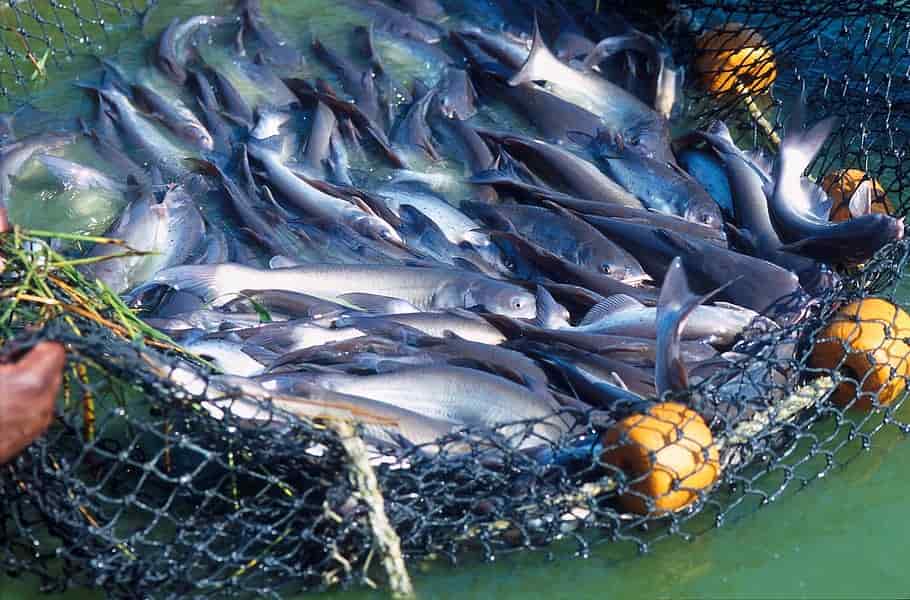Project Report For Fish Farm
Introduction
Project report for Fish Farm is as follows.
Fish farm and fish farming are both a part of aquaculture. Fish farming refers to the commercial practice of raising fish for human consumption in tanks or other enclosed places. Many different types of fish farms employ additional aquiculture methods.
Aquaculture, or “aqua farming,” is another name for the practice of raising aquatic animals like fish. Aqua farming’s farming component implies some level of manipulation of the natural growing process to increase output. Aquaculture has developed three times faster than animal husbandry on land, according to the Food and Agriculture Organization of the United Nations. Fish should be processed as soon as possible after being caught using methods that have been refined over time to maintain their freshness because they can expire quickly owing to microorganisms. This process is made easier by fish aquaculture since the fish are simpler to transport and collect. Many countries all over the world use these tactics to improve their economies. The United States, Japan, Chile, India, and Thailand are all major aquaculture producers, with China having the most aquaculture farms.

A farm can be established on land or over a body of water that is present in nature, such as the water near an ocean shore. In the body of water, a wide variety of fish, shellfish, and aquatic plants can be raised. These farms worldwide generate around 65 million tonnes (59 million MT) of various sea life each year for harvesting. Additionally, fish farming allows farmers the rare opportunity to design a habitat for rearing a particular species of fish. This frees them from having to struggle to separate undesirable fish and other sea life when harvesting a catch, allowing them to concentrate on the species that are supposed to be farmed. A fish farmer can provide for the demands of a certain species. Different kinds of sea creatures also require particular kinds of food to live.
Catfish farming is straightforward in warmer regions. Catfish are typically raised in freshwater ponds and are fed mostly on soybeans, corn, and rice. Catfish are generally recognized as one of the more sustainable fish species for fish farming. Catfish farming began in the 1900s and became an industry in the 1950s. Catfish is frequently consumed because of market demand and its health advantages. Farm-raised catfish are normally collected around 18 months of age, although wild catfish typically grow to substantially higher sizes. Although there are more catfish species, the flathead, blue, and channel catfish are the three most popular.
Market Potential Of Fish Farm
The global fish farming market is anticipated to increase from its 2019 value of $285,359.7 million to $378,005.5 million by 2027, with a forecasted CAGR of 5.8%.
Fish farming is a word that describes the practice of raising fish. Through regular stocking, feeding, and predator protection, this agricultural practice intervenes in the rearing process to increase production. Currently, 580 species of fish are farmed worldwide, demonstrating a rich genetic variation both within and across species. Some farmers in underdeveloped nations and multinational corporations that can own the stock being grown both engage in fish farming. Many people have cultural traditions that include eating fish, and it has great nutritional value in terms of health advantages. Protein, fatty acids, vitamins, minerals, and crucial micronutrients can all be found in it in good amounts.
The segments of the global fish farming market are based on environment, fish type, and geographic location. The category of environment includes marine water, brackish water, and freshwater. Depending on the type of fish, the market is divided into pompano, snappers, groupers, salmon, milkfish, tuna, tilapia, catfish, sea bass, and other species of fish. The regions of North America (the United States, Mexico, and Canada), Europe (Russia, Norway, and the rest of Europe), Asia-Pacific (China, the Philippines, Japan, Indonesia, Vietnam, Australia, and the rest of Asia-Pacific), and LAMEA are all explored (Latin America, the Middle East, and Africa).
Project Report Sample On Fish Farm
Need Help?
Create 100% Bankable Project Report

